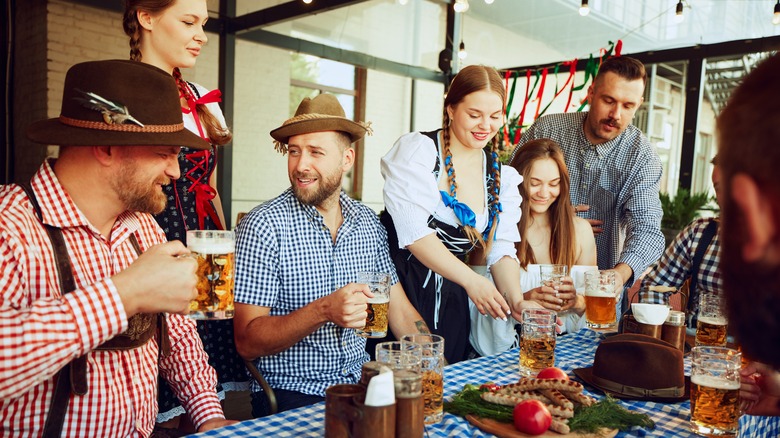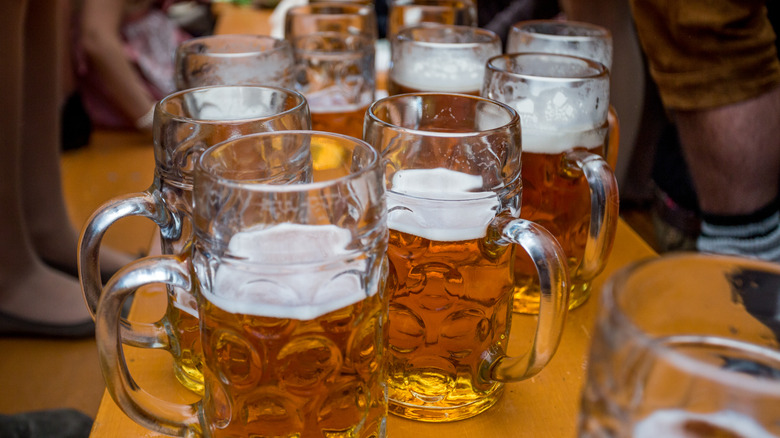What Beer Was Enjoyed At The First Oktoberfest Celebrations?
Märzen persisted as Germany's official Oktoberfest brew for over 100 years, and it's the standard Oktoberfest beer in the U.S. But this season, why not don your lederhosen, smash your steins, and harken back to the beer the first Oktoberfest-goers drank — a dunkel?
The first Oktoberfest took place in 1810 when the Bavarian monarchy hosted a festival to celebrate a royal wedding and invited common citizens. Arriving clad in Bavarian folkwear and bringing gifts to honor the wedded couple, the commoners loved the five-day affair, uniting the nation and sparking an annual celebration that would become Oktoberfest.
In the early 1800s, brewing methods were still archaic, relying on fire to heat the malt, which resulted in a dark and heavy beer called dunkel. However, at the time, it's possible the Germans referred to it as märzen. Today's märzen emerged toward the middle of the 19th century when a German and an Austrian traveled to England and discovered a new method that used hot air rather than fire to toast the malt. This method resulted in a lighter color and less of a smoky flavor. Because of its more palatable, easy-to-drink qualities, the modern-day märzen took off.
The Germans at the original Oktoberfest celebrations may have called their beer märzen because of a law requiring that the last of each year's beer had to be brewed by the end of March — Märzen is German for March. This law was enacted because the summer's heat heightened the risk of bacterial growth. Though it's possible they referred to their beer as märzen, the original Oktoberfest beer was not what we know as märzen today.
What differentiates a märzen from a dunkel?
Dunkel used to be produced with dark brown malt. Now made with a mix of malts, including Munich and black malt, dunkel is characterized by caramel, chocolate, and toasted bread flavors. Dunkel means "dark" in German — this refers to its dark color and strong taste. Though dunkel-style beer isn't a popular choice for the American palate, it isn't difficult to spot in your local liquor store.
Märzen, which is different from Munich's modern Oktoberfest brew, is more prevalent in American Oktoberfest celebrations. Märzen offers a malt-forward taste profile, balanced by a fresh bitterness from hops. It boasts similar flavors to the dunkel — such as toasted bread — but takes on a lighter color and an easier finish. It was the dominant style at Munich's Oktoberfest from its invention in the mid-1800s until the 1990s, when a lighter, milder style of lager overtook it.
These days, the official beer choices at Munich's Oktoberfest are a bit confusing, with Oktoberfest, märzen, and festbier all being represented. Only certain beers that abide by German law can be sold at Munich's Oktoberfest. Germany regulates its beer production and vending under the Reinheitsgebot, a beer purity law that has been in effect since the early 1500s.

